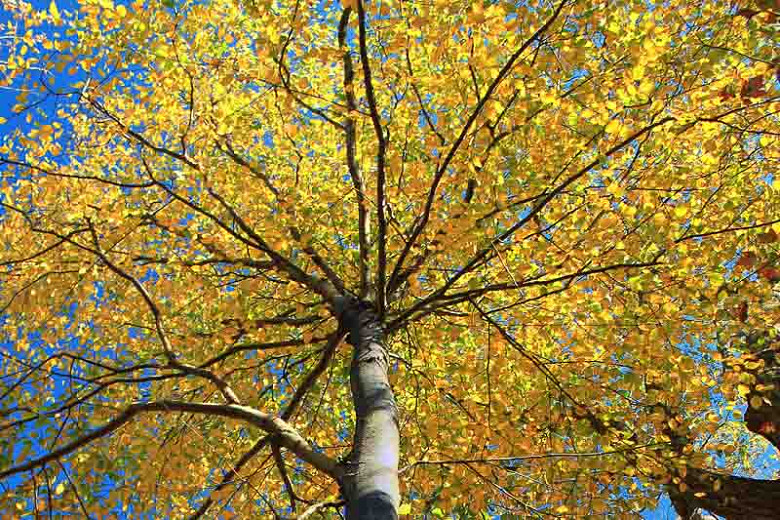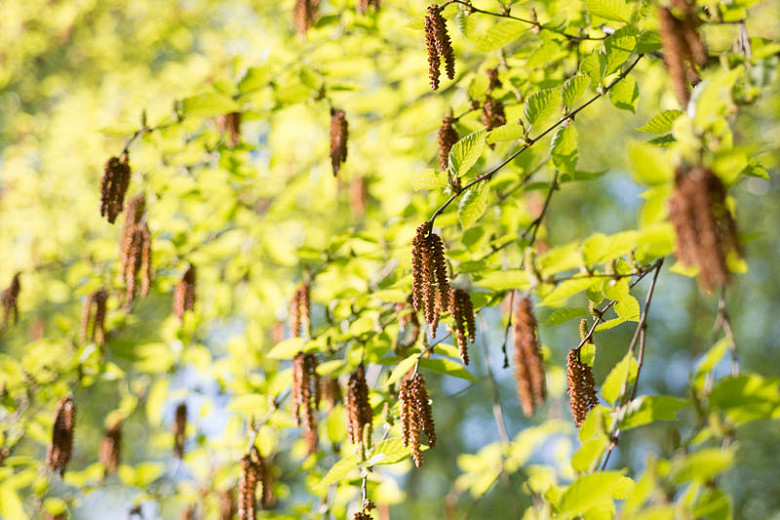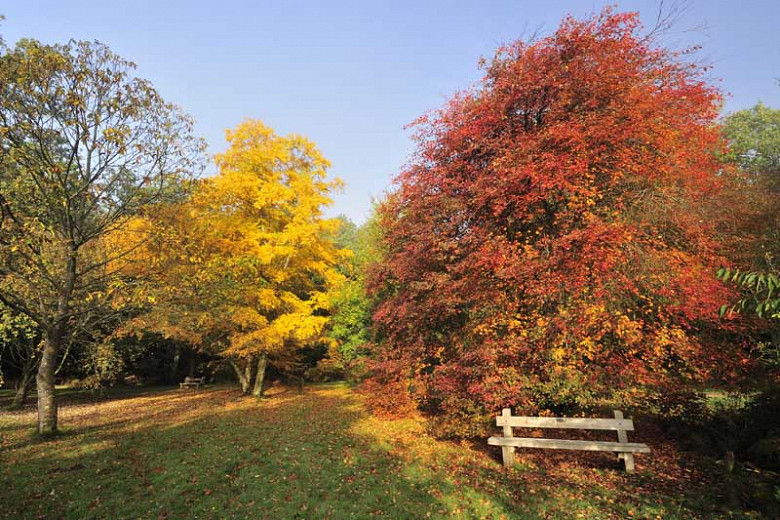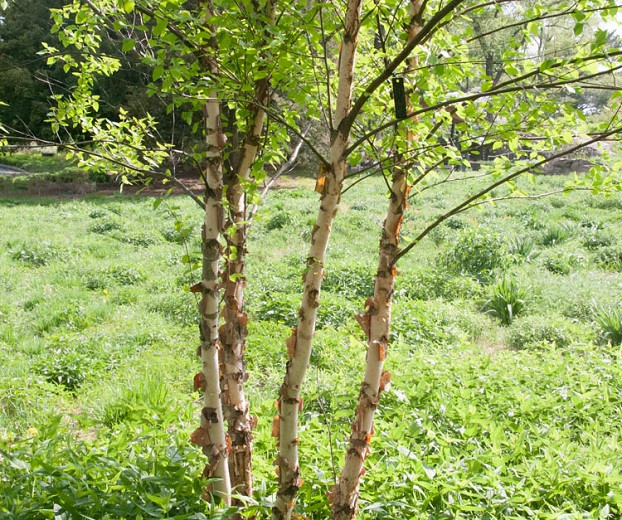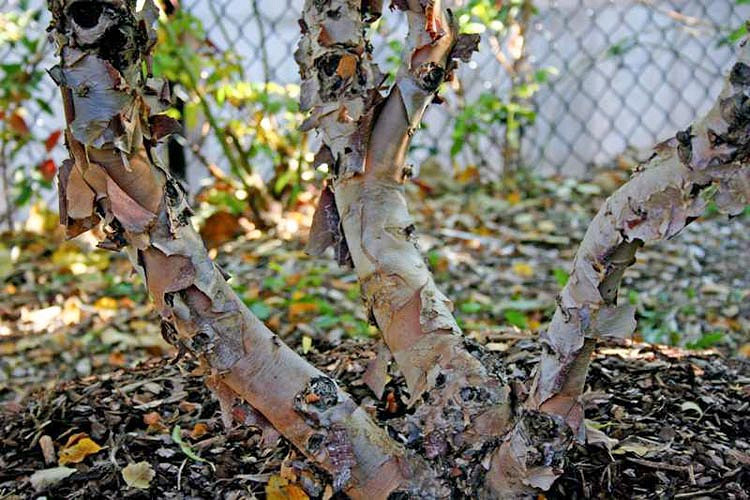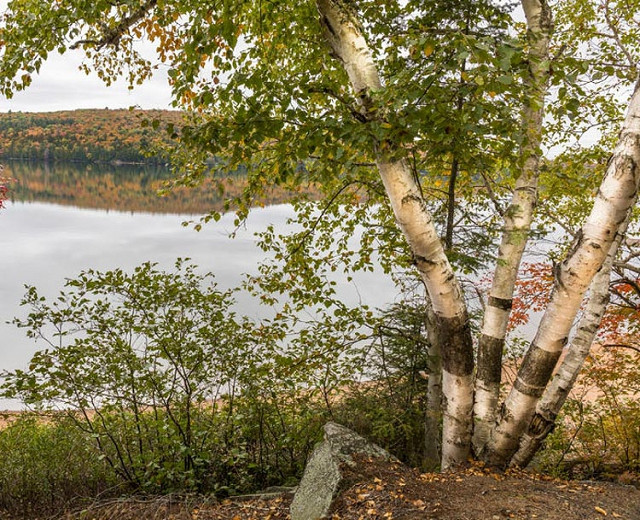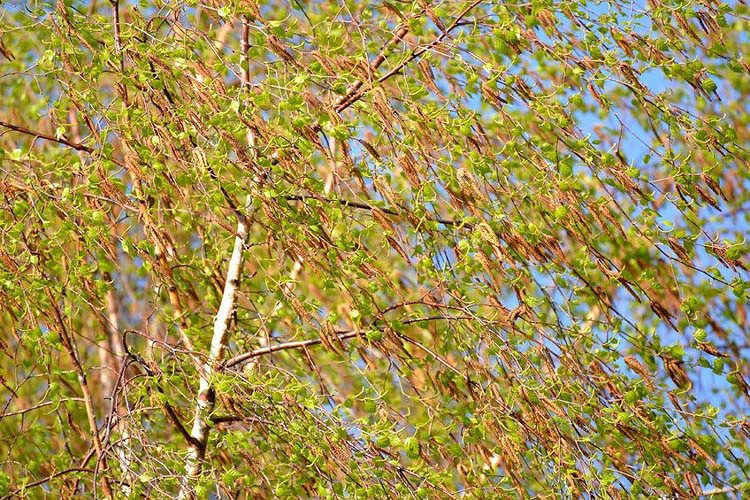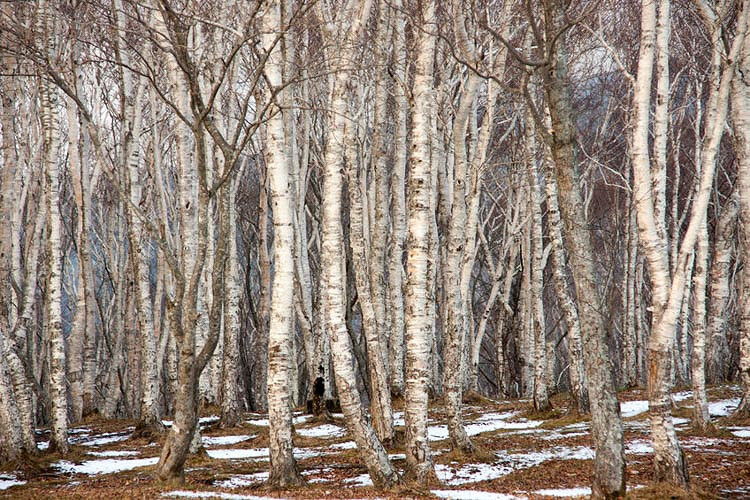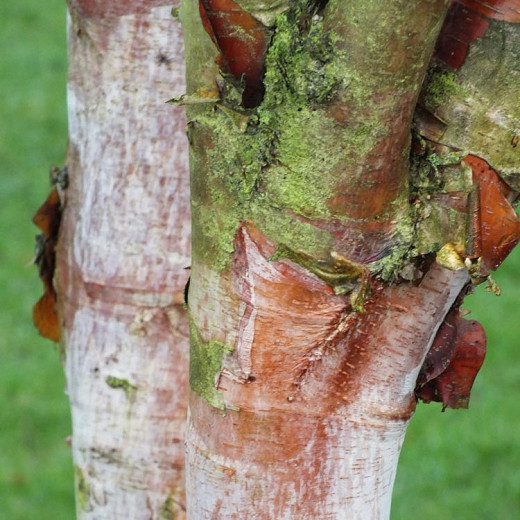Betula lenta (Sweet Birch)
Aromatic and long-lived (100 years or more), Betula lenta (Sweet Birch) is a single-trunked, medium-sized deciduous tree of conical habit in youth, becoming oval to rounded with age. Its ascending branches are covered with ovate, serrated, shiny leaves, 2-6 in. long (5-15 cm). Emerging light green in spring, the foliage turns dark green as the season progresses before turning rich golden yellow in fall. The flowers are small, tan catkins, 3 in. long (8 cm), that appear in spring before the leaves unfurl. They provide pollen for bees and other insect pollinators. Sweet Birch gives off a sweet fragrance when leaves, shoots, or bark are crushed. Smelling and tasting of wintergreen, the bark is quite appealing. Thin and reddish-brown in youth, it becomes dark gray with vertical, scaly plates with age. In winter, its delicate branching reveals the alternating, pointed buds and delicate catkins. Sweet Birch is a wonderful plant for wildlife. It attracts caterpillars and provides food for migrating birds in spring and fall. Attractive in all seasons, this superb eastern North American native is an excellent specimen tree and is also useful for lawns and naturalized areas. Performs best in cooler climates.
- Grows up to 40-50 ft. tall (12-15 m) and 35-50 ft. wide (10-15 m).
- A full sun or part shade lover, this plant is easily grown in moderately fertile, moist, well-drained soils. Tolerates a wide range of soil conditions from dry to wet. Salt tolerant.
- Perfect as a specimen plant, in coastal gardens, cottage gardens, or wildlife gardens.
- Low maintenance, this plant needs little pruning. If pruning is necessary, prune during the dormant season (when the sap has stopped flowing) from late summer to before mid-winter.
- Sweet Birch is resistant to bronze birch borer. It may be affected by sawflies, aphids, leaf miners, powdery mildew, rust or honey fungus. Deer resistant.
- Propagate by seed, softwood cuttings or grafting.
- Native to Eastern Canada and the United States.
Requirements
| Hardiness | 3 – 7 |
|---|---|
| Heat Zones | 2 – 7 |
| Plant Type | Trees |
| Plant Family | Betula – Birches |
| Exposure | Full Sun, Partial Sun |
| Season of Interest | Spring (Early,Mid,Late)Summer (Early,Mid,Late)FallWinter |
| Height | 40' – 50' (12m – 15m) |
| Spread | 35' – 50' (10.5m – 15m) |
| Water Needs | Average |
| Maintenance | Low |
| Soil Type | Chalk, Clay, Loam, Sand |
| Soil pH | Acid, Alkaline, Neutral |
| Soil Drainage | Moist but Well-Drained, Well-Drained |
| Characteristics | Fragrant, Showy |
| Native Plants | United States, Midwest, Ohio, Northeast, Connecticut, Delaware, Maine, Massachusetts, Maryland, New Hampshire, New Jersey, New York, Pennsylvania, Rhode Island, Vermont, Southeast, Alabama, Georgia, Kentucky, Mississippi, North Carolina, South Carolina, Tennessee, Virginia, West Virginia |
| Tolerance | Deer, Dry Soil, Salt |
| Attracts | Bees, Birds, Butterflies |
| Garden Styles | Coastal Garden, Informal and Cottage, Prairie and Meadow |
